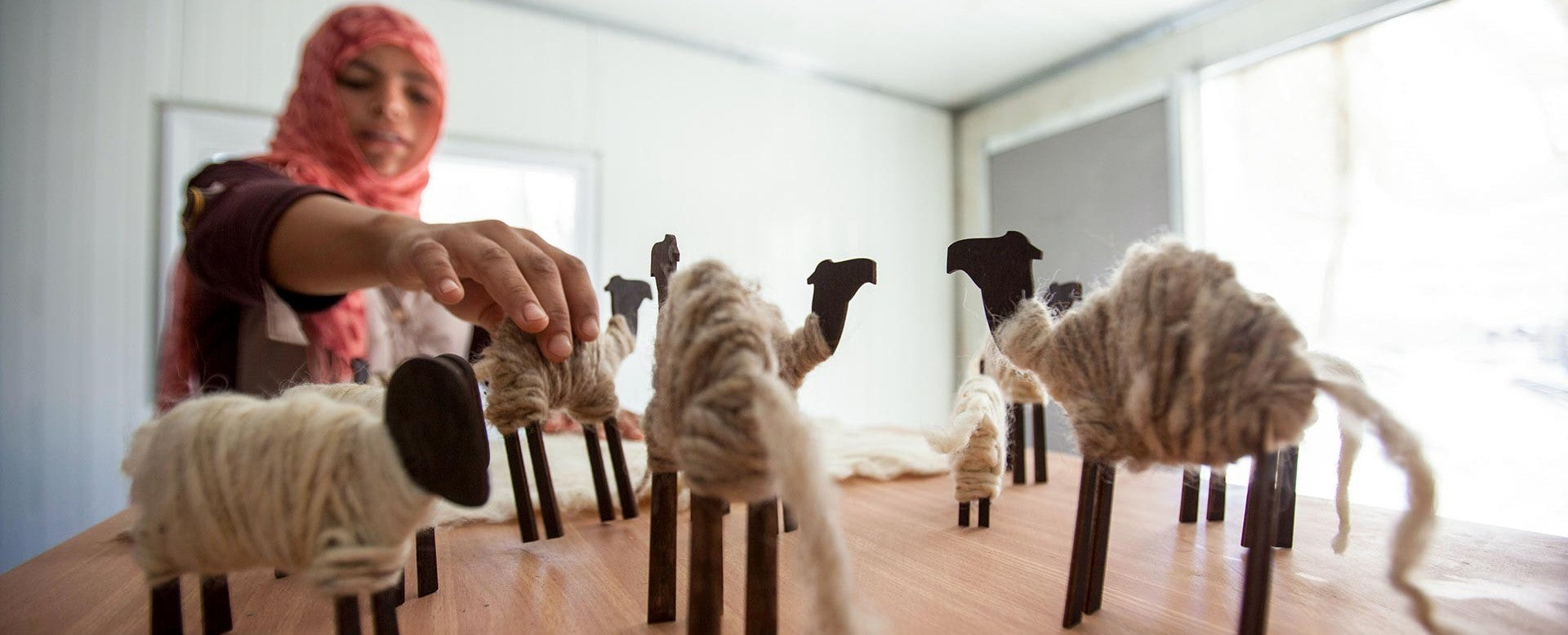A Buyer’s Travel

One month, three countries, twelve workshops, countless products…
You may already know that Ten Thousand Villages offers some of the most unique and culturally significant items from every corner of the globe. But have you ever wondered how we find them? Our buying team travels the world, visiting remote villages and rural homesteads, which often take hours to reach. It’s exhausting work, sometimes featuring less than ideal accommodations, in places where it’s not always safe to drink the water or walk alone at night. And they do this each year, not just for the sake of finding the next best product, but for more important reasons.
Director of Artisan Relations & Purchasing Manager Doug Lapp gives us his insight on why buying trips are so vital to our work, and shares some of the most memorable moments he’s experienced.
The Preparation
I’ve been doing these trips for a long time and I’ve found that a packing list is really important. I’ve developed a personal checklist that I use every time I travel. And regardless of how prepared I think I am, the last day of packing is always hectic.
As a whole, the Purchasing Department has developed systems to help us prepare. We have forms that help us keep track of all the information we need to share with the artisans we visit. We’ll review existing items: show them what’s selling well and let them know which items we’ll need to discontinue. Speaking openly about the success of a product helps groups to plan ahead and learn. If we choose to stop purchasing a particular item, they can sell it to another brand, or we can work together to improve the design into something new.
Product development is a big part of the trip. Groups will often have samples or drawings ready to present to us, but it’s often a really collaborative process that couldn’t really happen over email.
These visits are also our opportunity to find out how things have been going for the groups. This is our chance to find out about anything they might need, or if there are any obstacles they’ve been facing that we should know about. Some common challenges that arise for artisans in the developing world are material-sourcing, political unrest, natural disaster, lack of infrastructure, and lack of trend and design information. It’s also a time for us to see the working conditions first-hand and make sure that those conditions are up to our standards. Being there in person is the best way to achieve all of these things, so we try to prepare for that as much as we can and get the most out of our short time with each maker.
The Arrival
There’s always a lot of anxiety and nervousness that comes during those few hectic days before a trip. It usually stays with me until I’m on the plane, and then it gets easier.
I learned early to have a clear understanding of my arrangements ahead of time… My first visit to Haiti, I was going to visit a group I’d never met. They had arranged to pick me up at the airport, but when I arrived, I realized that I had not asked for any details about who would be there to meet me. So, when I exited the airport, I was confronted by the sight of a sea of people waiting to pick people up, without any clue of who I was to be looking for. Fortunately, after a few anxious moments, I saw someone holding a “Ten Thousand Villages” sign, so I waved at him and tried to make my way in his direction, but I lost him in the crowd. After pushing my way through the throng, a man greeted me enthusiastically, asking about my flight, welcoming me to the island, and offering to carry my bag as we headed towards the car. I had only a brief glimpse of the face of the person holding the Ten Thousand Villages sign, I assumed he was the driver that had been sent to meet me. As we walked across the parking lot towards the car, I asked how things were going at Caribbean Craft (the name of the group I was meeting), and how Regi & Joel were doing (our two contacts for the group). The driver had no idea who I was talking about… and that’s when I realized that he was just a friendly cab driver trying to drum up business, and not part of my arranged pick-up. Ever since that experience, I have made certain to know the name and the face of the person that I will be meeting.
The Visits
We will often visit multiple countries in the three or four weeks we travel. We’ll typically spend half a day or more at the office with the staff of the organization and then spend a day or two visiting the outlying workshops. Then we’ll move on to the next group and do the same thing.
Language barriers exist, but they aren’t usually a problem because most of the groups have at least one English-speaking staff member at their main office, and this person will often travel with me to the smaller workshops outside of the main cities.
Humor can be tricky! There has been more than one occasion where I tried to make a joke that was lost in translation. Usually, I’ll end my time at a workshop by asking if the makers have any questions for me, and they’ll sometimes ask me personal questions like, “Are you married?” or “Do you have any children?” Once I said that I don’t have children, but I have three beautiful cats—and they didn’t seem to find the humor in that. So I’ve learned that when it comes to joking around, there’s definitely a cultural element there that needs to be taken into account.
Down Time
There really isn’t much down time on these trips—we usually do our sightseeing from inside the car—if we’re on our way to someplace, the driver might point out, “Over there is some famous temple or museum!” but we rarely get to visit the touristy places.
If I ever do have an evening free, I’ll tend to spend it alone in my hotel room, just trying to relax and recoup from the travel. I definitely appreciate time to myself when I travel.
If I do happen to be in a really unique location, I will try to find some time to explore. La Paz in Bolivia is one of my favorite places to visit. It’s a really accessible place, and centered right in the middle of the Highlands, so you’ll see a lot of indigenous cultures—women in traditional dress selling interesting things at the street markets. That’s one place that I always try to visit when I’m close by.
The Makers
I don’t usually stay in artisans’ homes, but I’ll certainly visit them if they’re working from their homes—many of the rural workshops are set up that way. Or sometimes the artisan group will have visitors’ accommodations on their compound, as part of their office, so I’ll stay there and have meals with them, if they have a meal program set up for makers (which several do). It provides a deeper connection with the artisans.

This is not glamorous travel, but it’s really rewarding. I’ve been doing this for 15 years, so I’ve watched makers’ kids grow up. Mario and Yannina, for example, from the Manos Amigas artisan group in Peru have a daughter who I first met when she was just two years old. I used to be really into dark room photography and I would add oil tints to black and white photos. I had taken a photo of her when she was a baby, so one year, I gave her a print of that photo. I (and the other buyers too) often carry little animal-shaped tape measures on our travels because they come in handy and they’re not big or bulky—it’s a really convenient tool. One visit, she asked me what the little animal was, so I showed her it was a tape measure and I let her keep it because she liked it so much.
Overall, I feel humbled to work with people who face incredible challenges and difficulties—the situation in Haiti is a good example, as there are obstacles and challenges around every corner, because there is so little infrastructure in place, but Gisele Fleurant (photo below), the head of CAH, is an incredibly resilient and resourceful woman. The craft sector there is male-dominated, but she doesn’t let that stop her for one second. She drives her big four-wheel-drive truck on those rough roads and she makes things happen.
I work with people who are so dynamic and passionate, which has been more rewarding than I could have ever imagined.
I feel like these travel experiences have given me an important sense of perspective. It reminds me that my problems are never as big as they might seem in the moment. Money can’t buy happiness and, at the end of the day, people should always come first in every decision that’s made. I think that once you adopt that philosophy, it stays with you and helps you see the world in a new way.
 Doug Lapp
Doug Lapp
Doug is the senior buyer for Latin America and the Middle East, and was gracious to share his travel tales with us. Cycling enthusiast and woodworking hobbyist, he has been working with Ten Thousand Villages for more than 15 years as a key member of the Buying team.











Comments